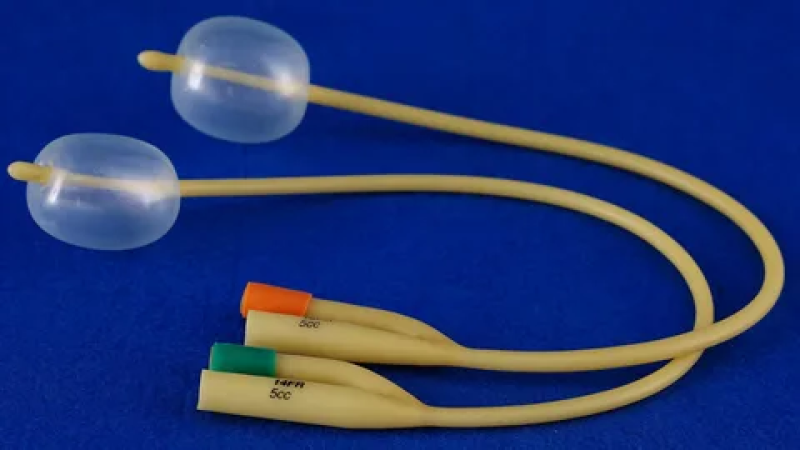Foley catheters are a common medical device used extensively in healthcare settings for urinary drainage. These flexible tubes are inserted into the bladder through the urethra to allow continuous urine drainage, especially in patients who are unable to void naturally. Since their invention, Foley catheters have become indispensable tools in hospitals, long-term care facilities, and home care environments.
Detailed Overview of Foley Catheter Types and Specifications
Foley Catheters come in various types designed to cater to different medical needs. They are primarily classified based on material, size, balloon capacity, and special features. Common materials include silicone, latex, and hydrogel-coated options. Silicone catheters are preferred for patients with latex sensitivity and for long-term use due to their biocompatibility and durability. Latex catheters are often more flexible and cost-effective but may cause irritation in some cases.
The size of a Foley catheter is measured in French units (Fr), with common sizes ranging from 8 Fr to 24 Fr. The balloon, a key component that holds the catheter in place inside the bladder, varies from 3 ml to 30 ml in volume depending on the application. Some catheters have dual lumens for drainage and balloon inflation, while others include a third lumen for bladder irrigation.
Specialized Foley catheters are available according to specific patient requirements and clinical settings. For example, coude-tip catheters are used for patients with enlarged prostates or urethral strictures because of their curved tip that facilitates easier insertion. Antimicrobial-coated catheters help reduce the risk of urinary tract infections (UTIs), which are common complications related to catheter use. Recent advancements include the development of biodegradable and smart catheters equipped with sensors to monitor urinary health.
Applications and Benefits of Foley Catheters in Medical Practice
Foley catheters play a critical role in managing urinary retention, incontinence, and other urological conditions. They are commonly used during surgical procedures to monitor urine output and maintain bladder decompression. For patients with chronic illnesses, spinal cord injuries, or severe mobility limitations, Foley catheters provide a comfortable and effective solution for bladder management.
The benefits of Foley catheters extend beyond simple urine drainage. They minimize the risk of bladder overdistension, improve patient hygiene, and aid in accurate measurement of urine output, which is vital for clinical assessments. Furthermore, the availability of catheter kits with all necessary components ensures ease of use and reduces the risk of infection during insertion.
Proper catheter selection and handling are critical to minimizing complications such as catheter-associated urinary tract infections (CAUTIs), bladder spasms, and urethral trauma. Healthcare providers are encouraged to follow strict aseptic techniques and use the appropriate catheter type for each patient scenario to optimize outcomes.
Navigation to Latest Insightful Market Intelligence on Foley Catheter Industry
For businesses, manufacturers, and healthcare providers looking to understand the evolving Foley catheter industry landscape, accessing comprehensive market research reports is essential. These reports deliver detailed analyses of key market drivers, competitive landscapes, regional insights, and technological advancements shaping the future of Foley catheter production and distribution.
Industry reports also shed light on the investment trends, regulatory environment, and consumer demand patterns that influence pricing strategies and product development. With the growing emphasis on patient safety and infection control, market intelligence explores the rising adoption of antimicrobial and advanced material-based catheters. This knowledge is vital for stakeholders aiming to make informed decisions in product innovation, market entry strategies, and supply chain optimization.
Transactional Overview: Purchasing Foley Catheters and Supply Chain Dynamics
The procurement of Foley catheters involves evaluating various factors such as product quality, cost efficiency, supplier reliability, and compliance with medical standards. Hospitals and healthcare facilities typically engage with multiple vendors to ensure continuous availability and competitive pricing.
Bulk purchasing options and strategic partnerships with manufacturers can help reduce operational costs while maintaining high standards of care. The market offers a wide array of Foley catheter models, catering to short-term and long-term use, allowing buyers to select products based on clinical needs and budget constraints.
In addition, digital platforms and specialized medical equipment distributors provide streamlined ordering processes, detailed product catalogs, and customer support, enhancing the transactional experience. Understanding these dynamics supports healthcare providers in optimizing inventory and managing patient care efficiently.
Commercial Insights on Future Trends and Innovations in Foley Catheter Market
The Foley catheter market is witnessing significant innovation driven by technological advancements and increasing patient awareness about catheter-associated complications. Integration of antimicrobial coatings, hydrophilic surfaces, and sensor technologies is transforming catheter design to improve safety and comfort.
Emerging trends also include the development of eco-friendly and biodegradable catheters responding to environmental concerns associated with medical waste. Manufacturers are investing in research and development to introduce smart catheters capable of real-time monitoring of bladder pressure and urine composition, which could revolutionize patient management.
The expanding geriatric population and rising incidence of urological disorders globally are expected to fuel market growth. Commercial strategies now focus on enhancing catheter usability through ergonomic designs and customizable options, catering to diverse patient needs across outpatient and inpatient settings.
Access to detailed market briefs is essential for manufacturers and investors aiming to capitalize on these trends and align product offerings with future healthcare demands.
Get This Report in Japanese Language: フォーリーカテーテル
Get This Report in Korean Language: 폴리 카테터
Read More Articles Related to this Industry- Key Players in the Electroencephalography Industry: Strategies and Innovations
About Author:
Ravina Pandya, Content Writer, has a strong foothold in the market research industry. She specializes in writing well-researched articles from different industries, including food and beverages, information and technology, healthcare, chemical and materials, etc. (https://www.linkedin.com/in/ravina-pandya-1a3984191)
